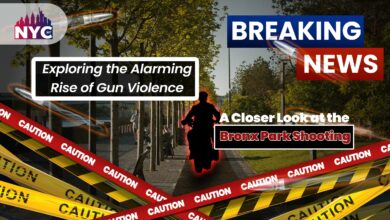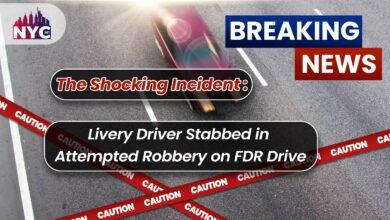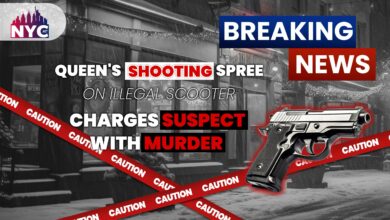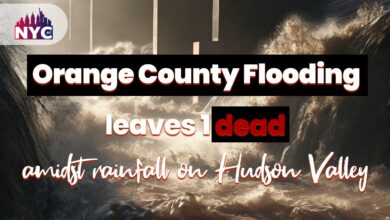The Most Congested Routes in NYC and How to Avoid Them
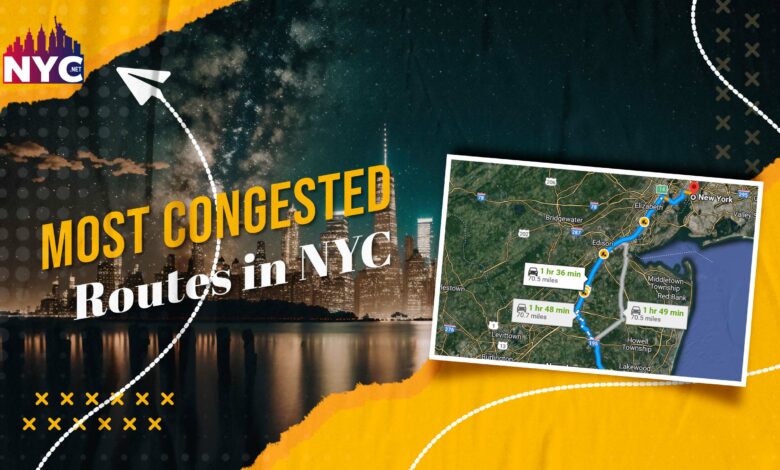
Most Congested Routes in NYC
Your daily routes could also be the most congested in NYC. However, with the right tips, you can easily avoid them. NYC is a city full of iconic skylines and vibrant energy. Undoubtedly, the city attracts millions of commuters and tourists daily. However, heavy traffic congestion often plagues the city’s streets, causing frustration and delays. The city streets are constantly buzzing with traffic almost every hour of the day. Too much that, at times, people pray for the city to sleep. Unfortunately, the most congested routes in NYC are also the ones most frequently used.
Therefore, we will explore some of the most congested routes in NYC. Moreover, it will also provide tips on avoiding them to save time and maintain your sanity while traveling through the Big Apple.
Hence, gear up for the ride.
The Most Congested Routes in NYC
It’s quite painful to see how almost every street is buzzing with traffic regarding the most congested routes in NYC. However, some are most congested than others.
Hence, some of the most congested routes in NYC are
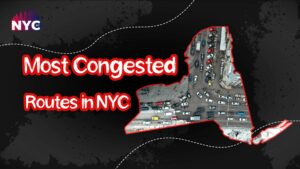
FDR Drive:
First and foremost, the FDR Drive. As it is formally named, the Franklin D. Roosevelt East River Drive extends along the eastern edge of Manhattan. It connects the Battery Park Underpass to the Harlem River Drive in the south and the Harlem River Drive to the north. The FDR Drive is infamous for being congested, especially during rush hour. Hence, Consider alternative routes such as the West Side Highway or public transit choices such as
- the underground
- or buses to avoid this congestion.
Cross Bronx Motorway:
Moreover, Cross Bronx Motorway is just a little behind in terms of congestion. Part of Interstate 95, the Cross Bronx Motorway, connects the George Washington Bridge to the Bruckner Interchange. This route is heavily congested throughout the day, especially around rush hour. To bypass the Cross Bronx Expressway, consider taking the George Washington Bridge during off-peak hours or exploring alternative routes such as local streets or the nearby Major Deegan Expressway.
Brooklyn-Queens Expressway (BQE):
The Brooklyn-Queens Motorway, often known as Interstate 278, connects Brooklyn and Queens. It connects to numerous major highways, including the Verrazzano-Narrows Bridge, the Brooklyn Bridge, and the Queens-Midtown Tunnel, and traverses a considerable chunk of the city. The BQE is frequently congested because of heavy traffic, ongoing construction projects, and different bottlenecks. When possible, travel at off-peak hours or via alternate routes such as local streets or the neighbouring Grand Central Parkway.
Midtown Manhattan:
Furthermore, Midtown Manhattan is a bustling hub for business, tourism, and entertainment, making it one of the most congested areas in the city. Streets like 42nd Street, 5th Avenue, and Park Avenue experience heavy daily traffic. Consider public transportation options like the subway or buses to navigate Midtown more efficiently.
Hence, If driving is necessary, plan and familiarize yourself with available parking garages.
Holland Tunnel and Lincoln Tunnel:
The Holland Tunnel and the Lincoln Tunnel connect New Jersey and Manhattan, critical transportation corridors for commuters from the West. During peak hours, these tunnels are quite congested, causing delays. Consider using alternative forms of transportation, such as commuter trains or buses, to escape this congestion.
If you must drive, avoid rush hour or seek alternative routes such as the George Washington Bridge.
Times Square:
In Midtown Manhattan, Times Square is famous for its iconic billboards, Broadway theatres, and bustling environment. It draws many tourists and residents, resulting in significant pedestrian and vehicular traffic. Broadway and 7th Avenue surround Times Square and may become highly congested, especially during peak tourist hours.
Therefore, to avoid this congestion, consider exploring alternative routes, such as using side streets or walking a few blocks from the main hub.
Queens-Midtown Tunnel:
The Queens-Midtown Tunnel, connecting Manhattan and Queens, is a vital transportation route for commuters travelling between the two boroughs. However, it frequently experiences congestion, particularly during rush hours. To mitigate the traffic in this area, consider travelling during off-peak hours or utilizing alternative modes of transportation like the subway or buses.
Additionally, staying updated with real-time traffic information can help you plan your trip accordingly.
Canal Street:
Canal Street is a significant east-west route in Lower Manhattan noted for its vibrant Chinatown and bustling street markets. On the other hand, the massive flood of pedestrians, delivery trucks, and cars frequently causes major congestion in the region. If your destination is nearby, consider walking or cycling to save time on Canal Street. If driving is required, patience and cautious navigation are essential.
Therefore, Taking alternate routes or using nearby streets such as Broome or Grand will help you avoid the worst traffic.
Grand Central Terminal:
Grand Central Terminal is a prominent Midtown Manhattan transportation hub that serves as a key transit centre for trains, subways, and buses. As a result, the areas surrounding Grand Central Terminal, such as 42nd Street and Park Avenue, are heavily congested, particularly during peak commuting hours. Consider taking the well-connected underground system or buses instead than driving to or from this region. If driving is inevitable, become acquainted with neighbouring parking garages.
The Williamsburg Bridge:
Lastly, one must remember the Williamsburg Bridge. The Williamsburg Bridge, which connects Manhattan’s Lower East Side to Brooklyn’s Williamsburg, is an important route for commuters travelling between the two boroughs. However, it frequently suffers from high traffic congestion, particularly during rush hours.
To avoid the congestion on the Williamsburg Bridge, consider using alternative routes like the Manhattan Bridge or the Brooklyn Battery Tunnel. Public transportation options such as the subway or buses can provide a faster and more efficient commute.
Tips to Avoid Traffic Congestion in NYC:
Once we know the most congested routes in NYC, we shall know how to avoid them. Technically, it is impossible to avoid them altogether. However, there are certain measures you can use to avoid the busy hours or escape the heavy congestion of the roads.
Hence, here are some of those tips to help you:
Utilize Public Transportation:
First and most importantly, try to avoid private transport and seek refuge from the public. Undoubtedly, the extensive subway and bus network in NYC can provide a faster and more efficient way to travel, particularly during peak hours.
Hence, consider using these options to bypass heavy traffic.
Carpooling:
You should work smart and share a ride with others. Doing so can reduce the number of vehicles on the road, minimizing congestion. Therefore, be open to exploring carpooling options or rideshare services available in the city.
Plan Ahead:
Planning is important to avoid any congestion. Therefore, check for real-time traffic updates, road closures, and construction information before leaving. Moreover, many apps and websites can provide valuable information to plan your route effectively, like:
- Google Maps,
- Waze,
- or the NYC Department of Transportation’s website.
Hence, always use these applications to plan before going out.
Off-Peak Travel:
Whenever possible, travel during non-peak hours to avoid the heaviest congestion. Early mornings, late evenings, or weekends can offer a smoother and less stressful commute.
Explore Alternative Modes of Transportation:
Consider cycling or walking for shorter distances within the city. NYC has been working on improving bike lanes and pedestrian-friendly infrastructure.
Use GPS Navigation Apps:
Another smart trick is to use GPS navigation apps such as:
- Google Maps,
- Waze,
- or Apple Maps
They can be invaluable tools for navigating NYC’s congested routes. These apps provide real-time traffic information, suggest alternative ways, and help avoid areas with heavy congestion. Moreover, they will also alert you to accidents, road closures, or construction zones so that you can make informed decisions accordingly.
Consider Commuter Trains and Ferries:
Consider taking commuter trains or ferries from the suburbs to NYC. These solutions can give a more relaxed and efficient mode of transportation, avoiding high road traffic. Using public transport for most of your journey and transferring to a car for the final leg can also help you avoid active regions.
Investigate Car-Sharing Services:
In NYC, car-sharing services such as Zipcar or Car2Go provide a practical alternative to owning a car. These services enable you to use a vehicle only when necessary, minimizing the number of cars on the road. Furthermore, car-sharing frequently offers reserved parking spaces, making obtaining parking in the city easier.
Stay Flexible and Patient:
Lastly, staying patient and knowing you cannot completely outrun the congestion is important. Despite your best attempts to avoid traffic, you may occasionally be in heavy traffic. Hence, you must retain patience and a cool demeanor in such instances. Getting upset or agitated will make the issue worse.
Hence, Some of the good ways to pass the time are:
- Deep breaths,
- calming music or podcasts,
- and extra time in traffic to relax or catch up on your favorite audio content
Conclusion:
Navigating through the congested routes of New York City can be daunting. Still, carefully planning and considering alternative options can significantly reduce travel time and frustration. Whether utilizing public transportation, avoiding peak hours, or exploring alternative routes, implementing these strategies will help you navigate the city more efficiently. Embrace the vibrant energy of NYC while minimizing the hassles of heavy traffic congestion on your journeys through the concrete jungle.
